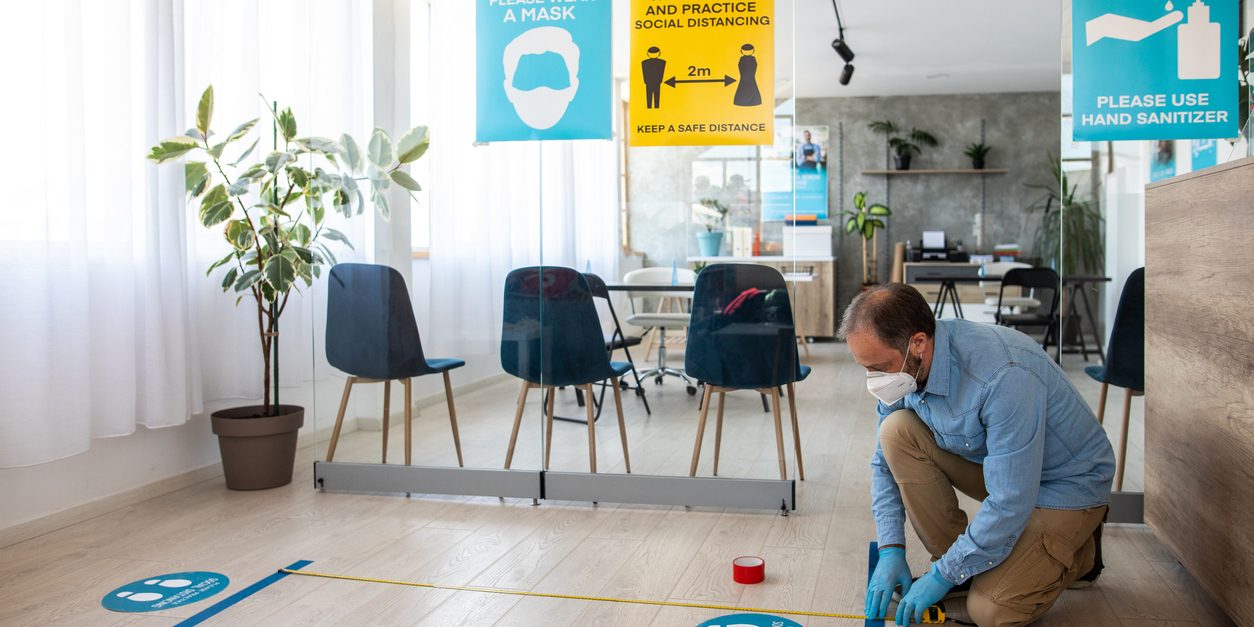Due to confusion among California employers, Cal/OSHA has revised guidance for the emergency COVID-19 regulations that took effect on Nov. 30, 2020.
Under the emergency regulations, employers were required to take a number of actions to safeguard their workers against the coronavirus, but the rules have caused much confusion among businesses.
Guidance issued in December didn’t seem to help much, so on Jan. 8 Cal/OSHA revised its guidance to provide more clarity on:
- Employer testing obligations,
- Physical distancing and other controls,
- How to pay employees who are excluded from the workplace either after catching COVID-19 or if they are quarantining after coming into contact with someone who is infected, and
Here’s what you need to know.
Testing
The COVID-19 temporary standard obligates employers to do the following:
- Inform all employees how they may obtain testing, whether it is through the employer, local health department, health plan or community testing.
- Offer no-cost testing to employees who may have a COVID-19 workplace exposure.
- Provide no-cost periodic testing ― either weekly or twice weekly, depending on the severity of the outbreak ― to all employees who were in an exposed workplace during the outbreak.
- Provide testing in a manner that ensures employee confidentiality.
Here’s the guidance:
- Employers may provide testing to employees at a testing site separate from their work location, and need not provide on-site testing unless desired.
- Employers can send their employees to a free public testing site, as long as they incur no out-of-pocket costs to be tested. That means paying them for their time to get tested, including traveling to and from the testing site.
- If a worker refuses to be tested, and the employer follows its obligations to provide free testing, there will be no repercussions for the employer. Businesses don’t have to obtain a signed declination from employees who refuse to test.
Exclusion pay
The emergency regulations require employers to pay employees who are unable to work due to a positive COVID-19 test or if they are forced to quarantine due to exposure in the workplace.
The guidance states that in order for employees to receive exclusion pay, they must be “able and available to work.”
Cal/OSHA provides some examples of when employers must pay exclusion pay:
- When the employee is symptomatic and would be unable to work due to the symptoms.
- If the employee is out of work for more than a standard quarantine period based on a single exposure or positive test, as this may be evidence that they are unable to work.
- If the employee is receiving temporary disability benefits through workers’ compensation.
- If the employee is unable to work because of reasons other than protecting the workplace from possible COVID-19 transmissions (e.g., business closure, caring for a family member, disability or vacation).
Employees are only entitled to exclusion pay under the standard if the exposure or infection was work-related.
Physical distancing, other controls
Under the emergency rules, employers must ensure that workers maintain at least 6 feet of distance from other persons at all times possible.
In the new guidance, Cal/OSHA outlines how to measure that space, including:
- Measuring the space between two peoples’ bodies; or
- Measuring the distance between two peoples’ breathing zones (i.e., the distance between their heads).
The guidance also states that employers with “fixed work locations” must install cleanable solid partitions that reduce the risk of aerosol transmission, such as Plexiglas barriers.
Enforcement
Cal/OSHA states in its latest guidance that it will give employers a break from monetary penalties through Feb. 1 as long as:
- The employer made a good-faith effort to comply;
- The violation would not have been considered a violation of the employer’s Injury and Illness Prevention Program, respiratory protection program or other applicable Cal/OSHA standard in place prior to the date emergency rules took effect;
- The employer abates the violation; and
- The violation does not involve an imminent hazard.
With little time left, if you have employees reporting to work, you should take all steps necessary to achieve compliance. After Feb. 1, enforcement efforts are likely to increase.


